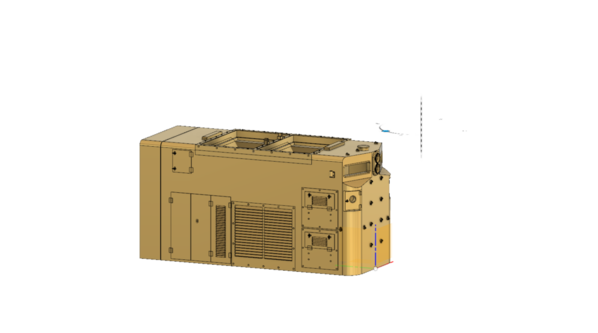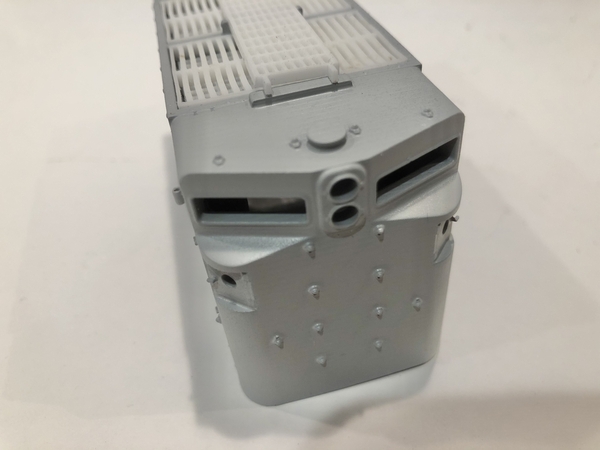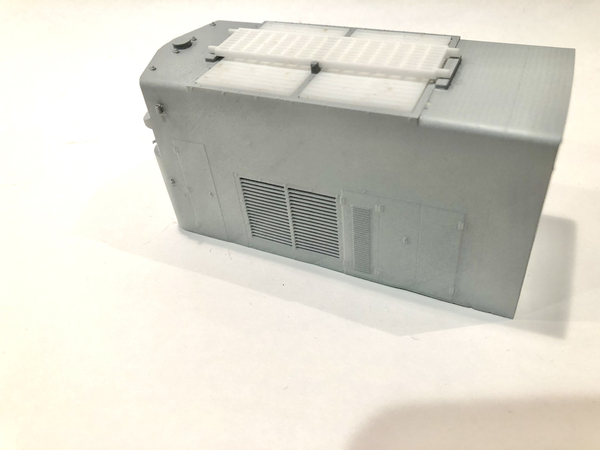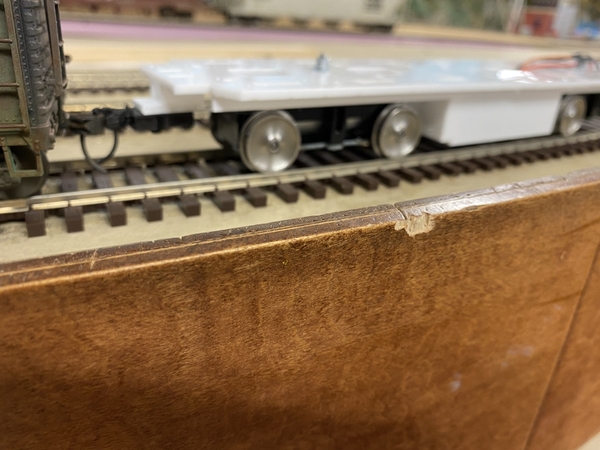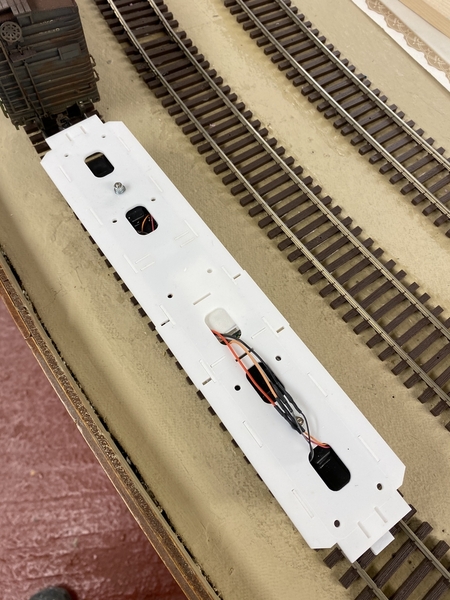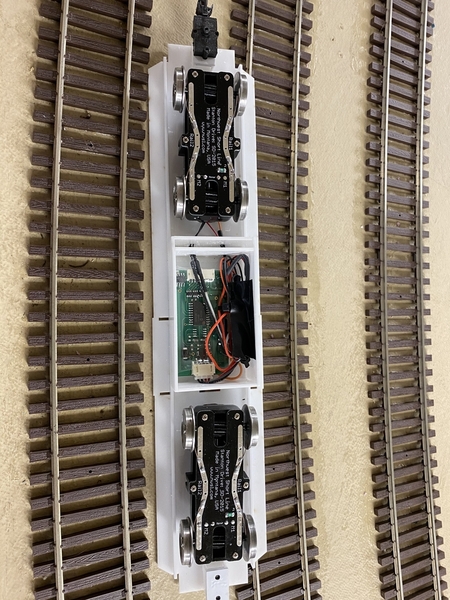I posted something about this project a month or so ago, and was primarily looking for help with suggestions for the drive. I’ll post in this thread as the project progresses. Essentially, this attempt to build an ALCO C-415 from scratch, with the help of laser, cnc, and 3d printing technology, is sort of a test to see if it’s feasible, and to test the different methods available to me. Originally I was going to 3d print some of the more complicated parts, like the hood ends, but use laser cut acrylic for the majority of the body, however, I’ve since changed course a bit, and I am testing whether most of the hood structures, and maybe even the cab, can be printed as mostly single pieces. So far, I’m encouraged.
The design work is done in Autocad’s Fusion360. This is free software, with limitations, for personal and business start-up use. This is the drawing I made of the shortish hood (the C415 is somewhere between a center cab, and standard road diesel). I colored it brass as I know a lot of you have a fetish for that material. This drawing gets covered to a “mesh”, which is basically tens of thousands of interlaced triangles that follow the surfaces of the object. The mesh file is an STL format, commonly used for 3d printing and CNC work. The file is then loaded into a program called a “slicer” which came with my 3d printer. The slicer is used to orient the object of optimal printing, add supports, that keep the print in place, and are removed after, and to actually slice the object into .05 millimeter sections. Each of these sections is a layer that is printed and then another layer added on top, and on and on. This hood took 8hrs to print. (You don’t need to watch, or monitor the printer). The resin printer I used for this cost less than $250.
The radiator louvers and walkway on the hood top are laser cut, and they need some more adjustments to the design to make them a bit finer in detail. This is the mostly raw print, with just a shot of primer to show what needs to be cleaned up. The printer leaves some layering that can be removed with a half hour of careful sanding and a good sandable, filling primer. The only things not printed, other than the louvers and walkway, are the wire grab irons, two lift rings on roof, and the door handles for long doors. However, the nut/washer casting and start of holes are printed, and set up for Tichy drop wire grabs, and the plates for door handles are printed, but handles will be bent from wire and added. Unlike the laser, the small wire holes tend to fill up with resin during the print and will need to be drilled out a bit, but at least they are started and locations set.
I’m especially excited that the printer was able to print the flag holders on each side of hood side near the front top. The hole for the holder is tiny - one inch at 1/48 scale. The printer also did a good job with the small t handle latches on the small square doors on the nose and three on one side of the hood. You will also see bolt heads around the side louvers and the radiator assembly. These are roughly 1/2” bolt heads in real life.
I still need to add the radiator louver actuators on the top of the hood, but I’m working on the long hood. The long hood, although much longer, is actually simpler to draw, as it mostly just has a lot of the tall doors/hinges, and only a single louver on each side. The roof is also very simple.




